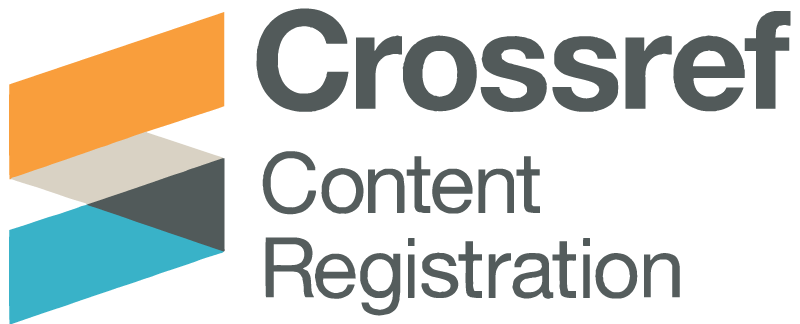The Dramatic Structure in the Texts of the Prophet’s Sunnah
An Analytical Study
DOI:
https://doi.org/10.59743/jau.v35i2.1535Keywords:
Drama, Sunnah, simulation, Dramatic StructureAbstract
The study aims to understand the dramatic dimensions in the texts of the hadiths in the light of the dramatic Structure, also, aims to discuss and analyze the texts that included the use of drama to understand how to benefit from simulation in achieving the goals of the prophetic text. For this purpose, the study used the descriptive-analytical method and content analysis to analyze the content of the texts of several prophetic hadiths. The study concluded that the Sunnah included dramatic stories that represent and simulate topics through the characters, for example, Gabriel played an acting role simulating a man asking the Prophet, and Satan simulating a man who needs charity, in addition to other examples that have been studied and analyzed. Drama and simulation in the Prophetic Sunnah were in two forms, the first was positive, to achieve an educational dimension, the second was negative, the characters used drama to escape the truth, as is the case with Satan. The frequent use of simulation by the angels, by order of God, indicates the importance of the dramatic method of communicating with humankind. The prophetic texts also included a dramatic structure in which the elements of the plot, conflicts, dialogue, characters, and others.
References
Adway, A. (2016). The role of television treatment of the historical drama: an analytical study of" Omar series". Nilai: Doctoral dissertation, Universiti Sains Islam Malaysia.
Adway, A. (2018). Drama and Simulation in Sunnah. Proceedings of the 6TH International Prophetic Heritage Conference (SWAN 2018) . Istanbul, Turkey : USIM.
Bandura, A. (1977). Self-efficacy: toward a unifying theory of behavioral change. Psychological review, 192-193. DOI: https://doi.org/10.1037/0033-295X.84.2.191
Wessels, C. (1987). Drama . Oxford.
القرآن الكريم.
إبراهيم حمادة. (1977). طبيعة الدراما. القاهرة: دار المعارف.
المجلس الوطني للثقافة والفنون والآداب. (1986). نظريات التعليم. (علي حسين حجاج، المترجمون) الكويت.
اليسع حسن أحمد. (2015). مرتكزات فكرية وجمالية لعلم الدراما: قراءة للجمال والصورة في القرآن الكريم بالتطبيق على سورة يوسف عليه السلام. مجلة العلوم الإنسانية، 16(3)، 1-19.
جبار خماط حسن. (2020). البناءالدرامي في النص القرآني"سورة طه أنموذجا". مجلة الأكاديمي(98). doi:https://doi.org/10.35560/jcofarts98/29-40 DOI: https://doi.org/10.35560/jcofarts98/29-40
رضا, ح. ر. (1972). الدراما بين النظرية والتطبيق. بيروت: المؤسسة العربية للدراسات والنشر.
عادل النادي. (1987). مدخل إلى فن كتابة الدراما. تونس: مؤسسات عبد الكريم عبد الله.
عدلي سيد محمد رضا. (1982). البناء الدرامي في الراديو والتلفزيون. القاهرة: دار الفكر العربي.
علي عبد الله. (2013). التعبير الدرامي والتنغيم في ترتيل القرآن الكريم: القارئ عبد الباسط عبد الصمد أنموذجا. المجلة الأردنية للفنون، 6(1)، 1-26.
فام, ل. (1964). المسرح الفرنسي المعاصر. الإسكندرية: الدار القومية للطباعة والنشر.
فايز ترحيني. (1988). الدراما ومذاهب الأدب. بيروت: المؤسسة الجامعية للدراسات والنشر والتوزيع.
قسم السيد ادريس يوسف. (2008). لغة الدراما في القرآن الكريم سورة مريم نموذجا. جامعة السودان للعلوم والتكنولوجيا.
كمال غنيم. (2003). المسرح الفلسطيني. القاهرة: دار الحرم للتراث.
محمد بن إسماعيل أبو عبدالله البخاري الجعفي. (1422هـ). صحيح البخاري. (محمد زهير بن ناصر الناصر (حققه) ، المحرر) دار طوق النجاة.
محمد حمدي إبراهيم. (1994). نظرية الدراما الإغريقية. القاهرة: الشركة المصرية العالمية للنشر-لونجمان.
مرتين آسلين. (1991). مجال الدراما. (سباعي السيد، المترجمون) القاهرة: دار الفن للنشر والتوزيع.
مسلم بن الحجاج أبو الحسن القشيري النيسابوري. (د.ت). صحيح مسلم. (محمد فؤاد عبد الباقي (حققه)، المحرر) بيروت: دار إحياء التراث العربي.
Downloads
Published
How to Cite
Issue
Section
License
Copyright (c) 2022 عبد الله محمود عدوي

This work is licensed under a Creative Commons Attribution 4.0 International License.
The rights relate to the publication and distribution of research published in the Journal of Alasmarya University where authors who have published their articles in the Journal of Alasmarya University should Know how they can use or distribute their articles. They reserve all their rights to the published works, such as (but not limited to) the following rights:
- Copyright and other property rights related to the article, such as patent rights.
- Copyright on all open access article in Journal of Alasmarya published by Alasmarya Islamic University is retained by the author(s) and they can used in it's future works, including lectures and books, the right to reproduce articles for their own purposes, and the right to self-archive their articles..
- Authors grant Alasmarya Islamic University a license to publish the article and identify itself as the original publisher.
- Authors also grant any third party the right to use the article freely as long as its integrity is maintained and its original authors, citation details and publisher are identified.
The Creative Commons Attribution License 4.0 formalizes these and other terms and conditions of publishing articles









